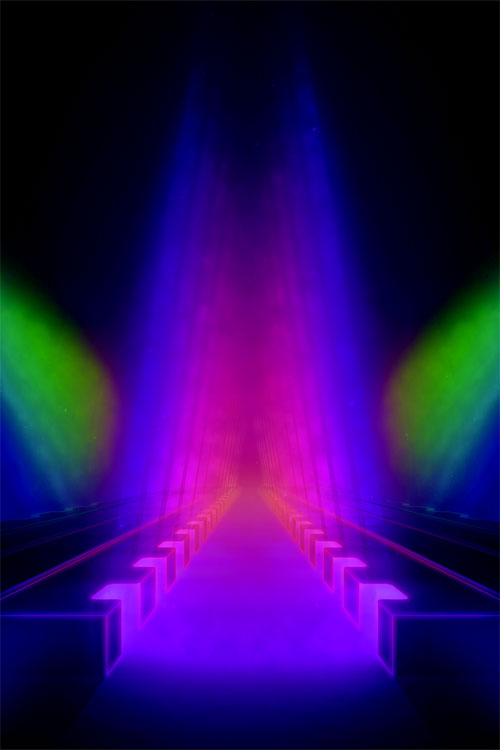
Stanford Scientists Trap and Redirect Light with Resonant Nanoantennas
Researchers in the lab of professor Jennifer Dionne at Stanford University have structured ultrathin silicon chips into nanoscale bars to resonantly trap light, and then release or redirect it later. “We’re essentially trying to trap light in a tiny box that still allows the light to come and go from many different directions,” researcher Mark Lawrence said, of the method that slows and directs light particles at will.
A central component of these “high-quality-factor“ or “high-Q“ resonators is an extremely thin layer of silicon, which traps light efficiently and has low absorption in the near-infrared — the spectrum that the researchers are interested in controlling. The silicon rests on top of a wafer of transparent material (sapphire, in this case) into which the researchers direct an electron microscope pen to etch a nanoantenna pattern. The pattern must be drawn as smoothly as possible, as the antennas serve as the “walls” that hold in the light, and imperfections inhibit their light-trapping ability.

An artist rendering of a high-Q metasurface beamsplitter. These 'high-quality-factor' or 'high-Q' resonators could lead to new ways of manipulating and using light. Courtesy of Riley A. Suhar.
Pattern design plays a key role in creating the high-Q nanostructures. “High-Q resonances require the creation of extremely smooth sidewalls that don’t allow the light to leak out,” Dionne said. “That can be achieved fairly routinely with larger micron-scale structures, but is very challenging with nanostructures, which scatter light more.”
The researchers found a pattern design that performed well and could be created using existing fabrication methods. The optical transfer function, near-field intensity, and resonant line shape could all be rationally designed, providing a foundation for efficient, free-space-reconfigurable, and nonlinear nanophotonics.
While beam-steering light to selected directions, the nanostructures demonstrated quality factors of about 2500. This is two orders of magnitude higher than similar devices have achieved, the researchers said. Quality factors, or Q-factors, are a measure used to describe resonance behavior, which in this case is proportional to the lifetime of the light. “By achieving quality factors in the thousands, we're already in a nice sweet spot for some very exciting technological applications,” Dionne said.
The high-Q resonators could lead to new ways to manipulate and use light, including new applications for quantum computing, virtual and augmented reality, light-based WiFi, and even the detection of viruses like SARS-CoV-2.
Currently, Dionne’s lab is working on applying its technique for slowing and steering light to detecting COVID-19 antigens and antibodies.
“Our technology would give an optical readout like the doctors and clinicians are used to seeing,” Dionne said. “But we have the opportunity to detect a single virus or very low concentrations of a multitude of antibodies owing to the strong light-molecule interactions.” The high-Q nanoresonators are designed to allow each antenna to operate independently to detect different types of antibodies simultaneously.
Dionne is also interested in using the device for lidar applications and in quantum science. “A few years ago I couldn’t have imagined the immense application spaces that this work would touch upon,” she said. “For me, this project has reinforced the importance of fundamental research. You can’t always predict where fundamental science is going to go or what it’s going to lead to, but it can provide critical solutions for future challenges.”
The research was published in Nature Nanotechnology (www.doi.org/10.1038/s41565-020-0754-x).
Published: September 2020